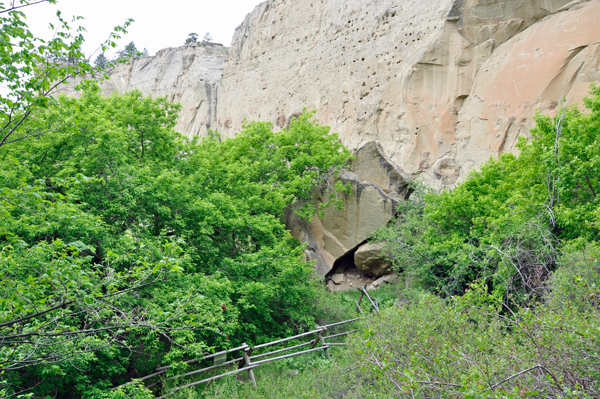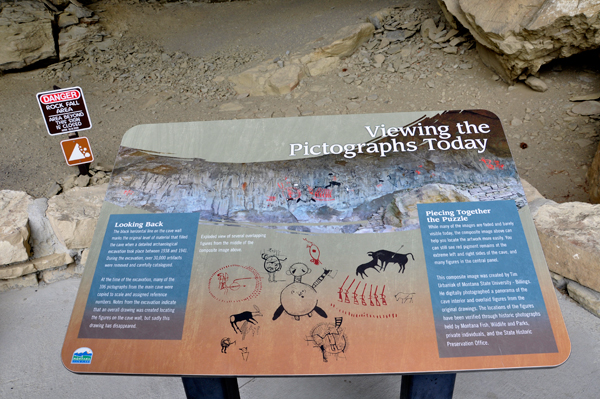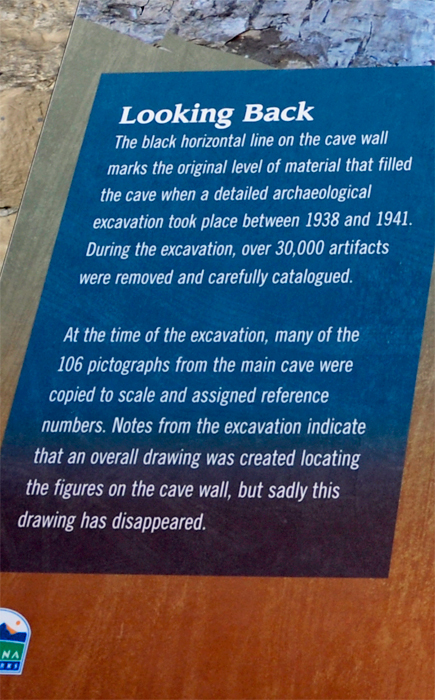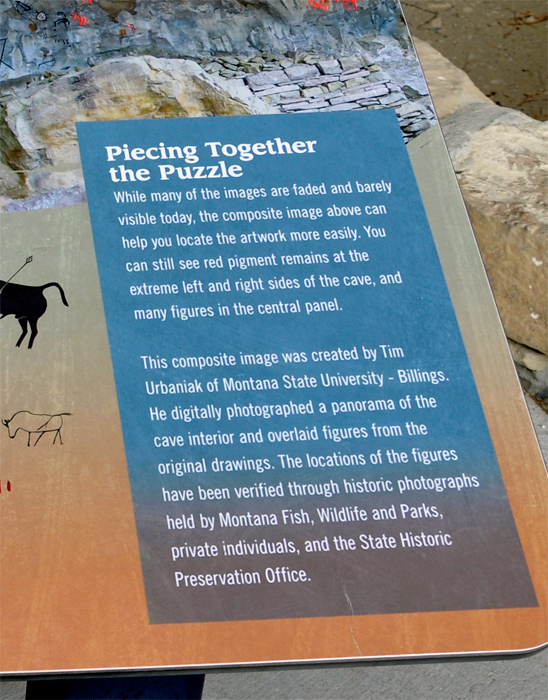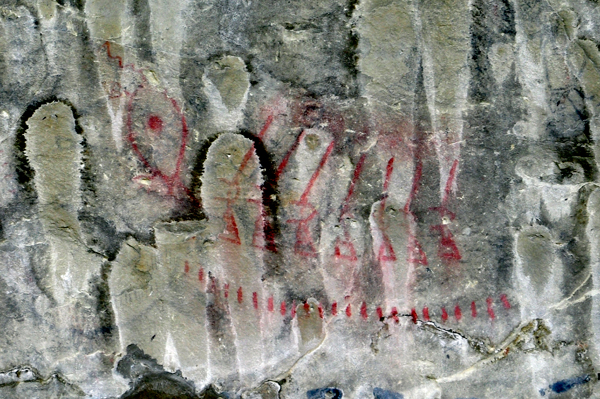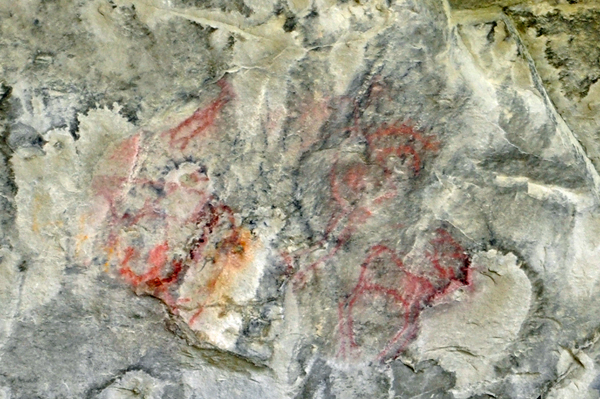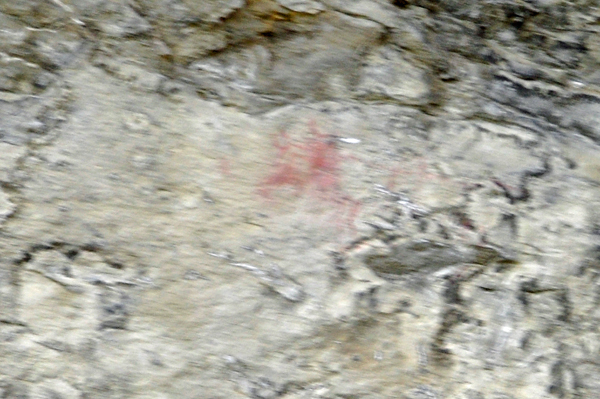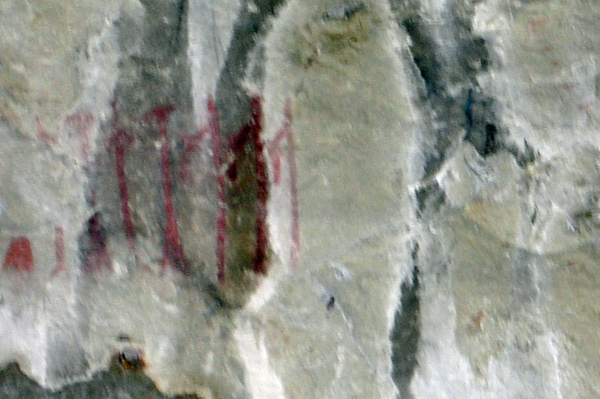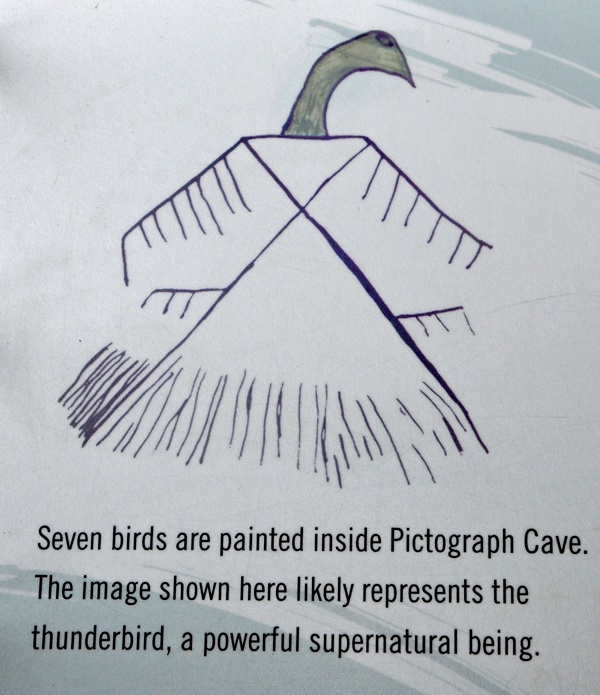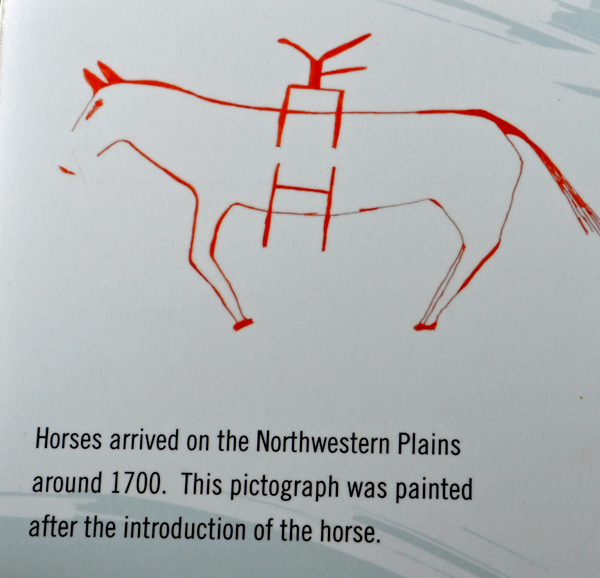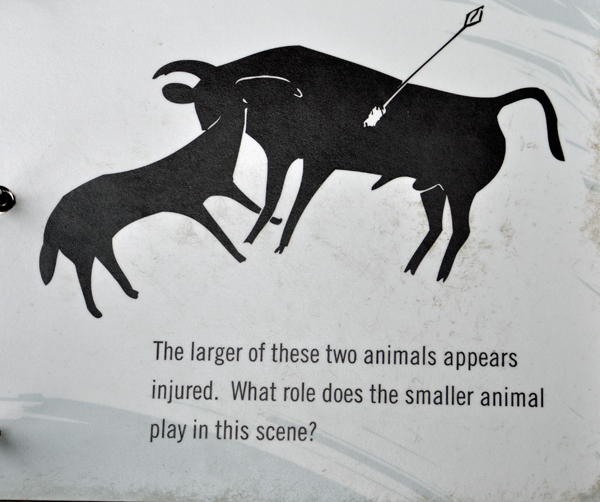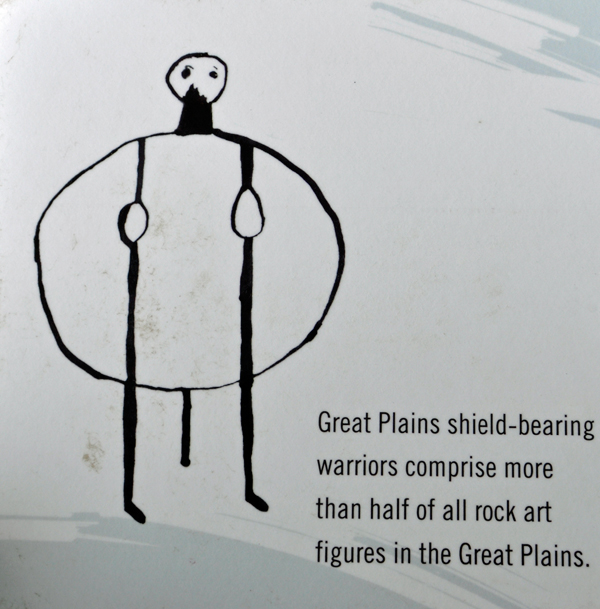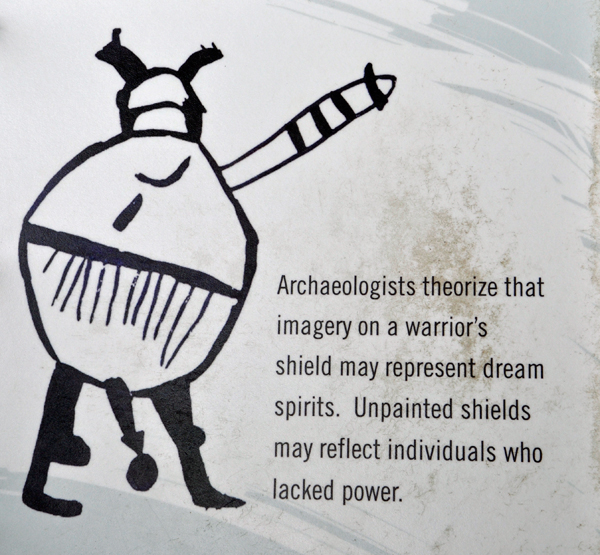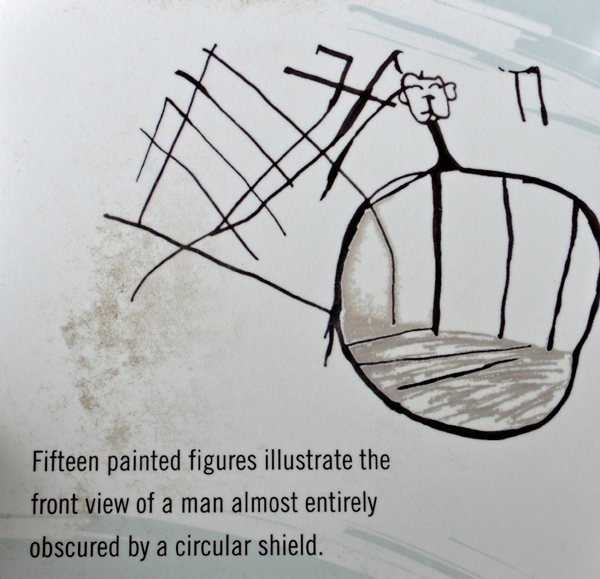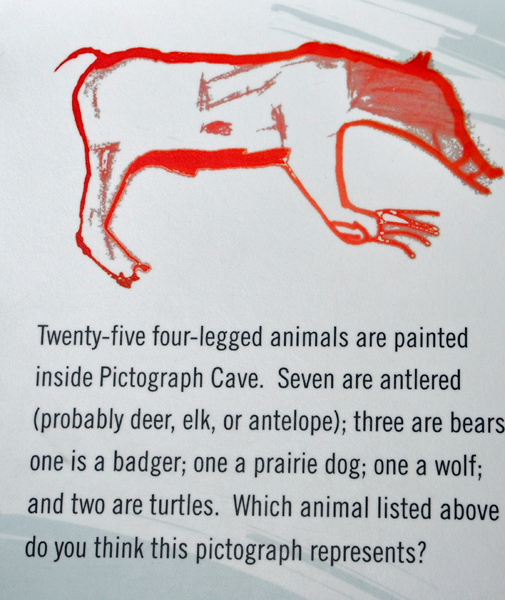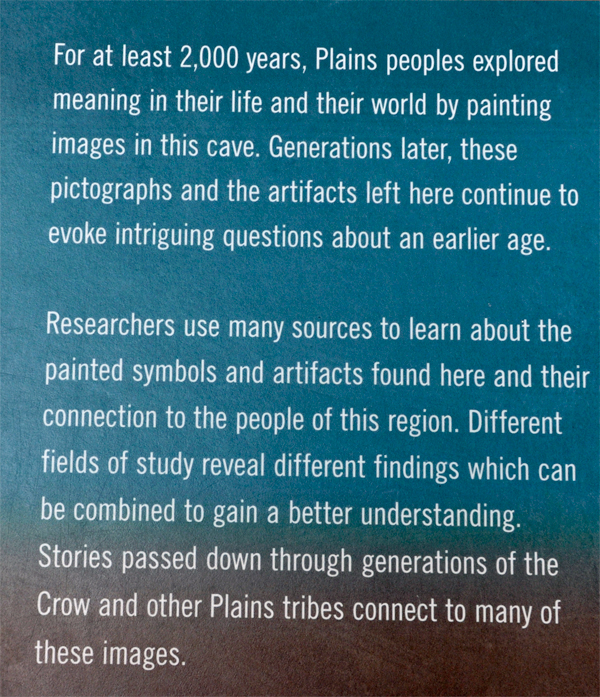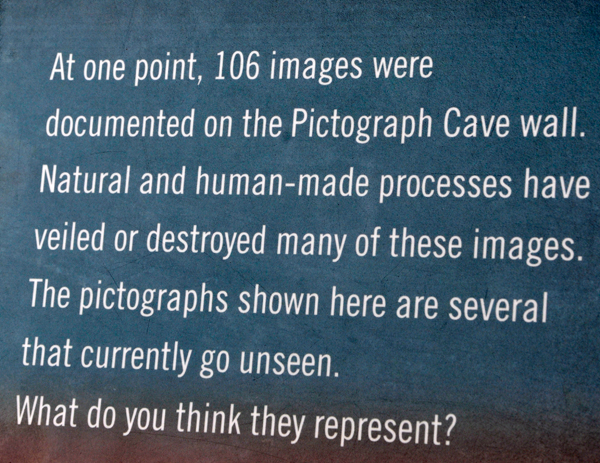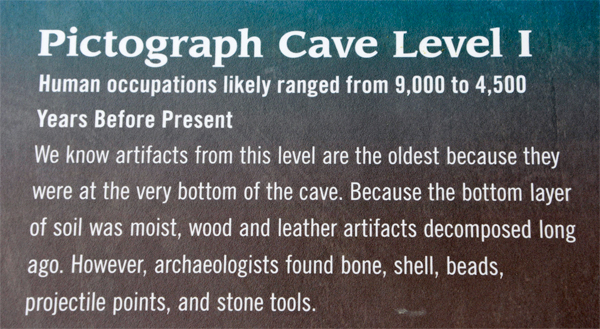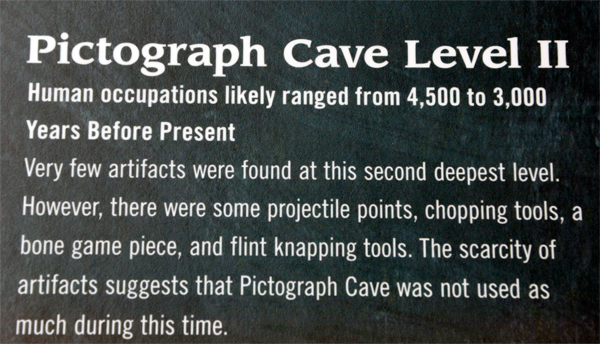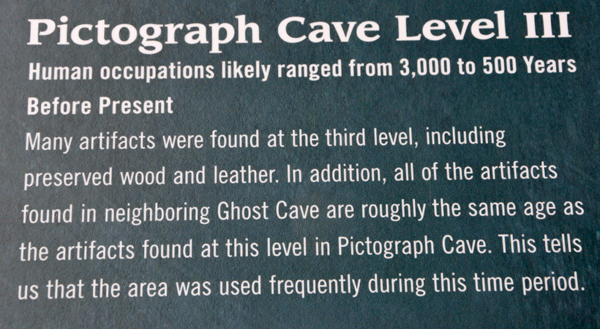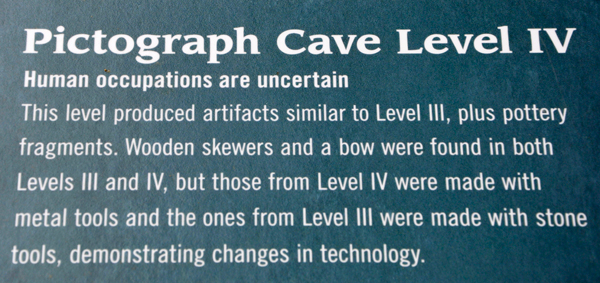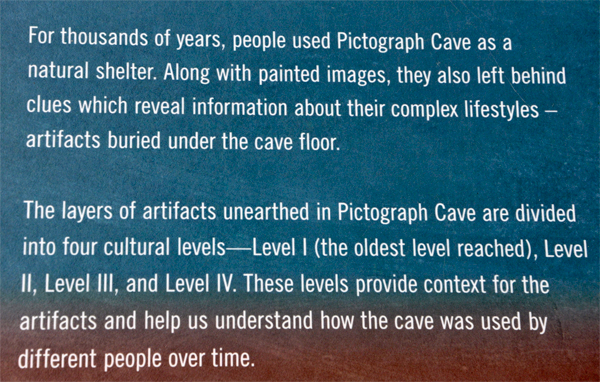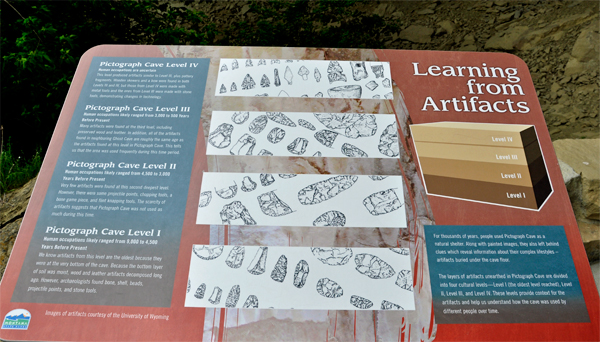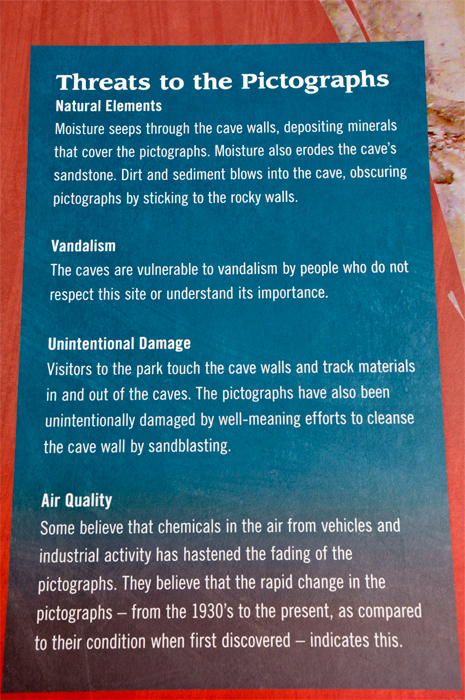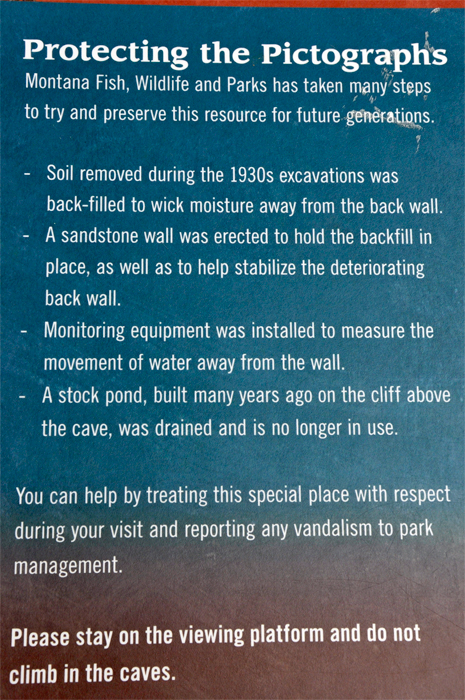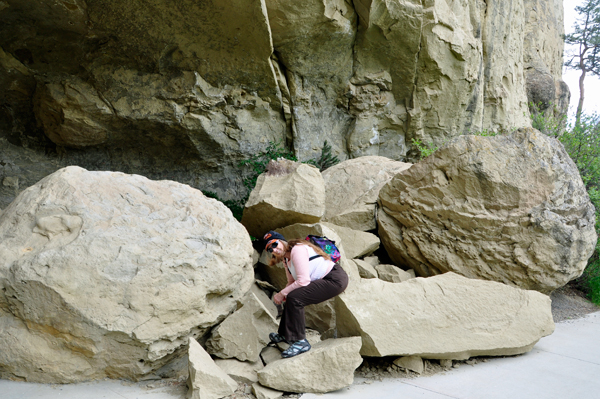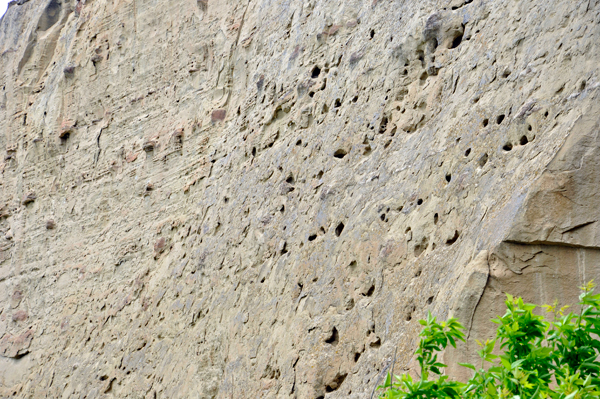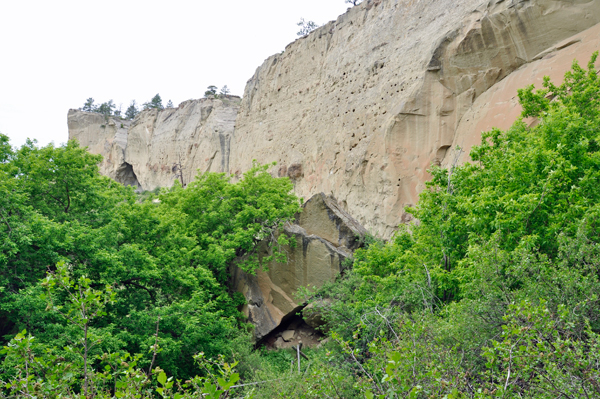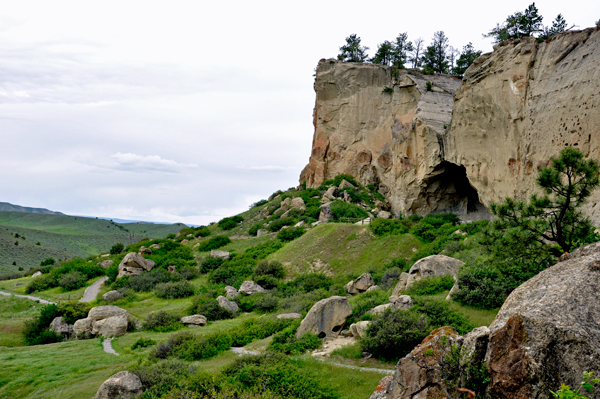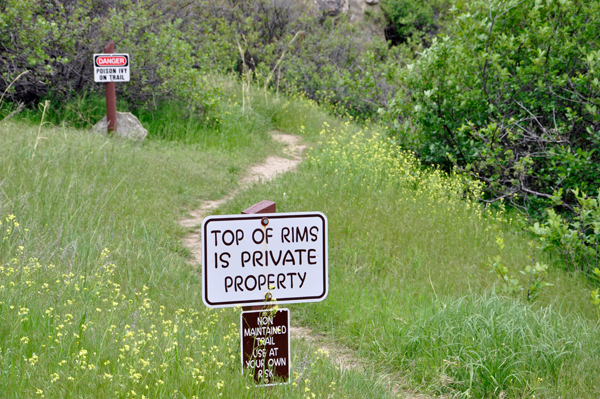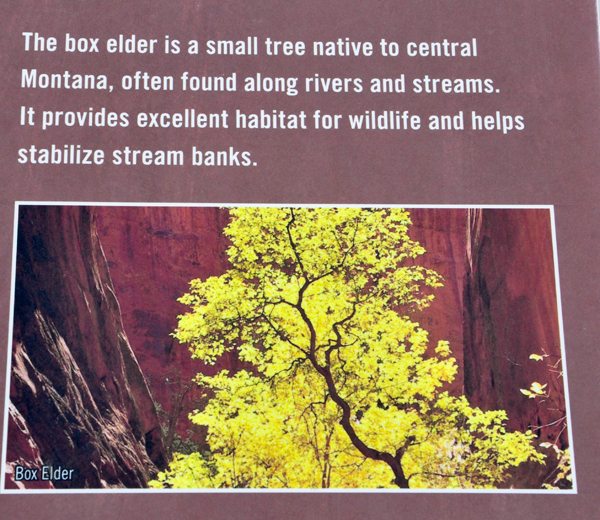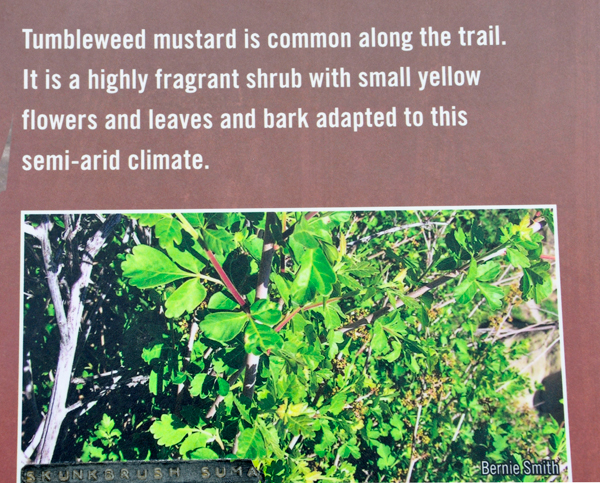Two RV Gypsies: Full-Time
RVers at
The Pictograph
Cave and pictographs- PAGE 2 OF 2 |
On the interior wall of Pictograph Cave (the only one containing rock art), archaeologists discovered 106 pictographs, painted between 2,145 and 200 years ago. The walls were covered with red, white, and occasionally yellow figurines over drawings originally painted with black. They also found stone and bone tools, moccasins, arrow shafts, basketry, grinding stones, and fire-starting tools. Excavations turned up jewelry too, such as pendants, bracelets, and beads crafted of seashells acquired from Pacific Coast Indians. The excavation was led by H. Melville Sayre of the Montana School of Mines. He later hired Oscar Lewis, an archeologist from the Glendive WPA crew, to help supervise the dig. William Mulloy replaced Sayre as the Project director from October 1940 to February 1942. |
|
Below: The two RV Gypsies took lots of pictures of the Pictograph Cave walls and later zoomed in on them trying to see images that could not be seen with their eyes, but only four real drawings showed up in the photographs. |
|
Below: A picture book showing what is supposed to be on the walls of the cave. |
|
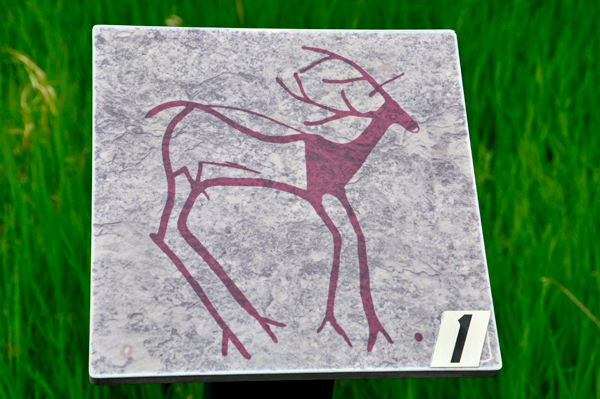 |
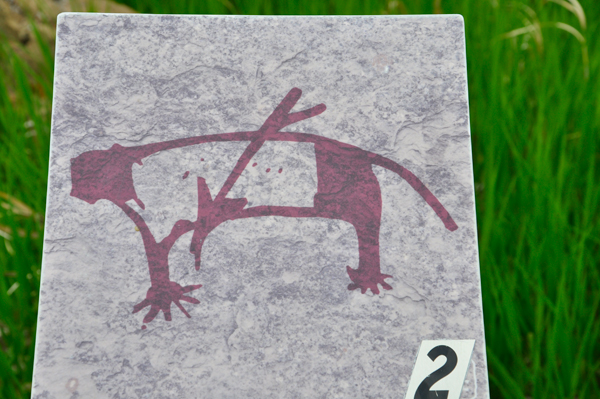 |
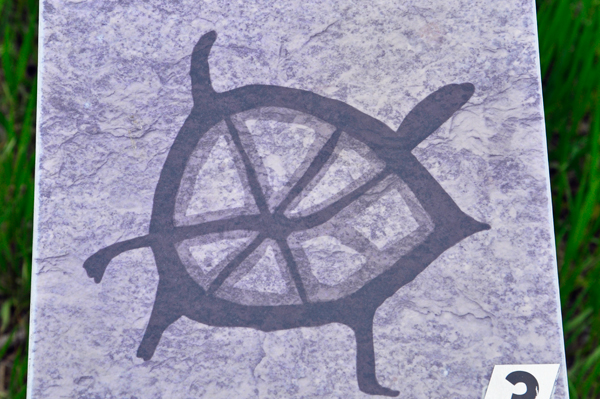 |
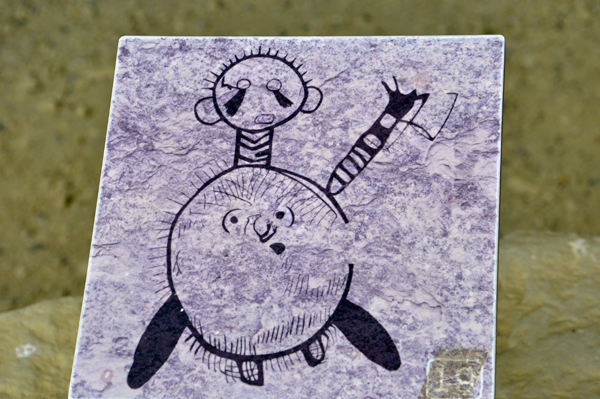 |
Below: Informative signs were everywhere, telling about the pictographs. |
|
Below: Karen Duquette studied the big rocks that had fallen. |
Worm Holes in the rocks |
Below: Looking back towards the Ghost Cave |
|
Below: Down at the bottom of the trail, the two RV Gypsies thought about walking on a different trail until they read the second sign that says Poison Ivy is on the trail. |
|
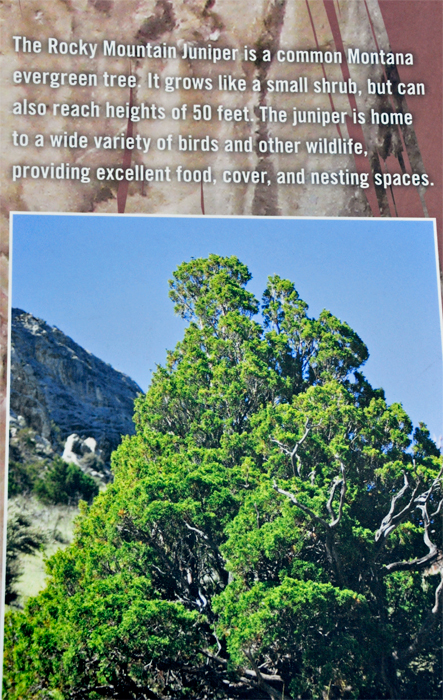 |
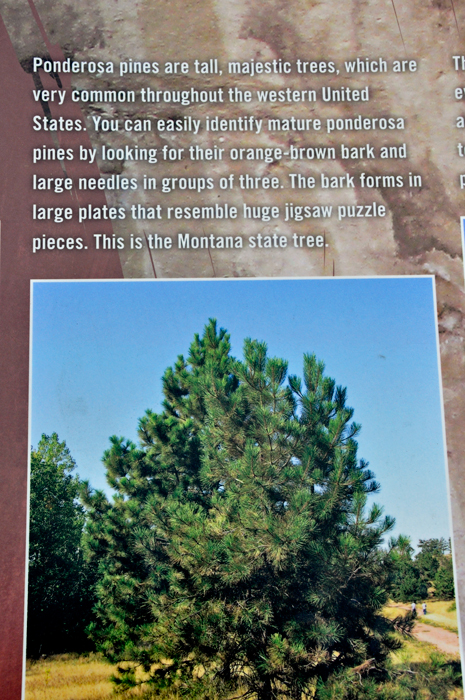 |
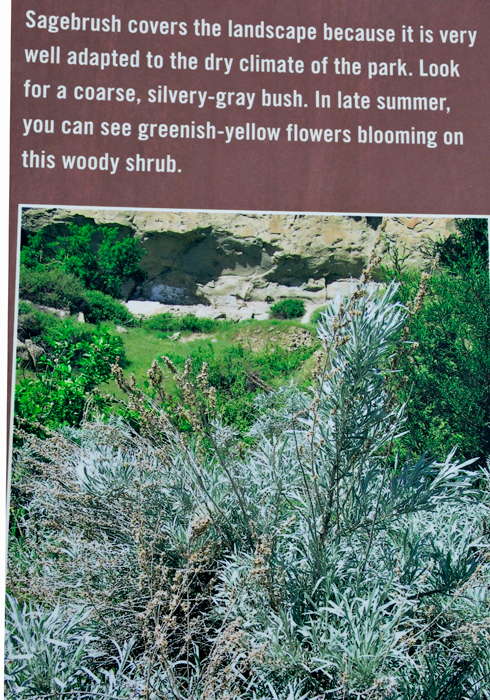 |
|
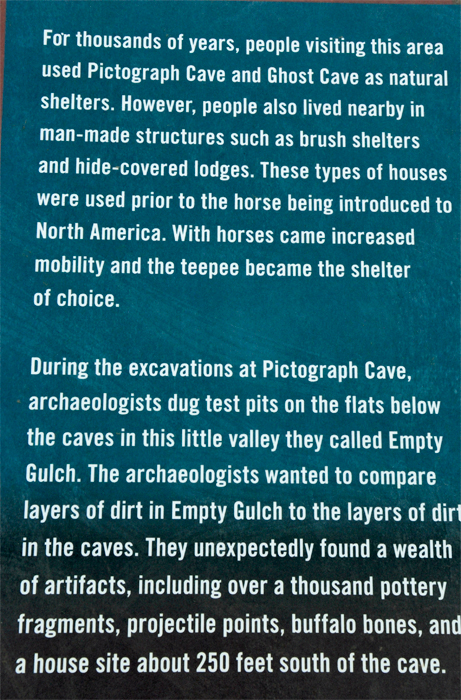 |
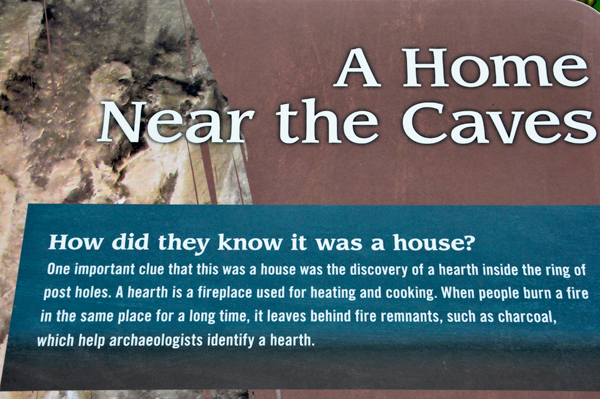 |
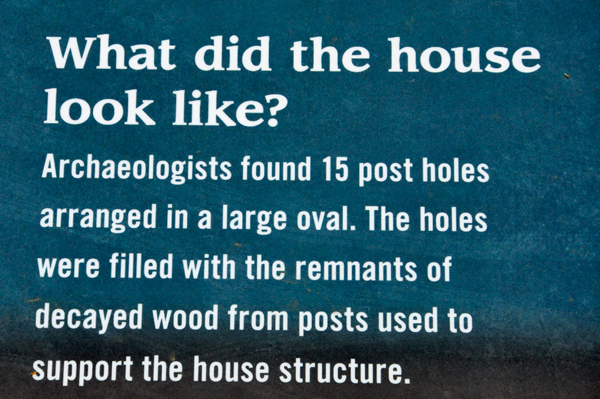 |
|
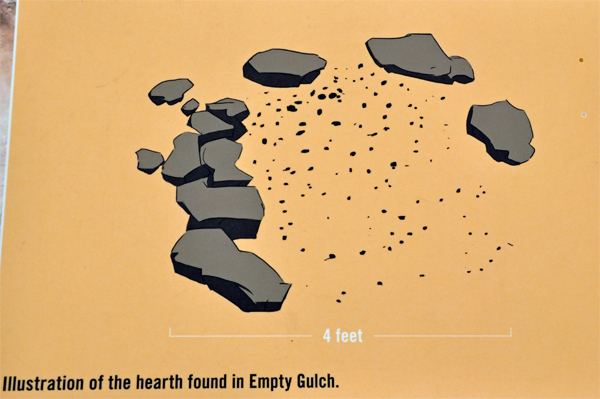 |
|
